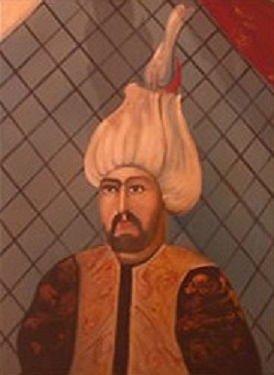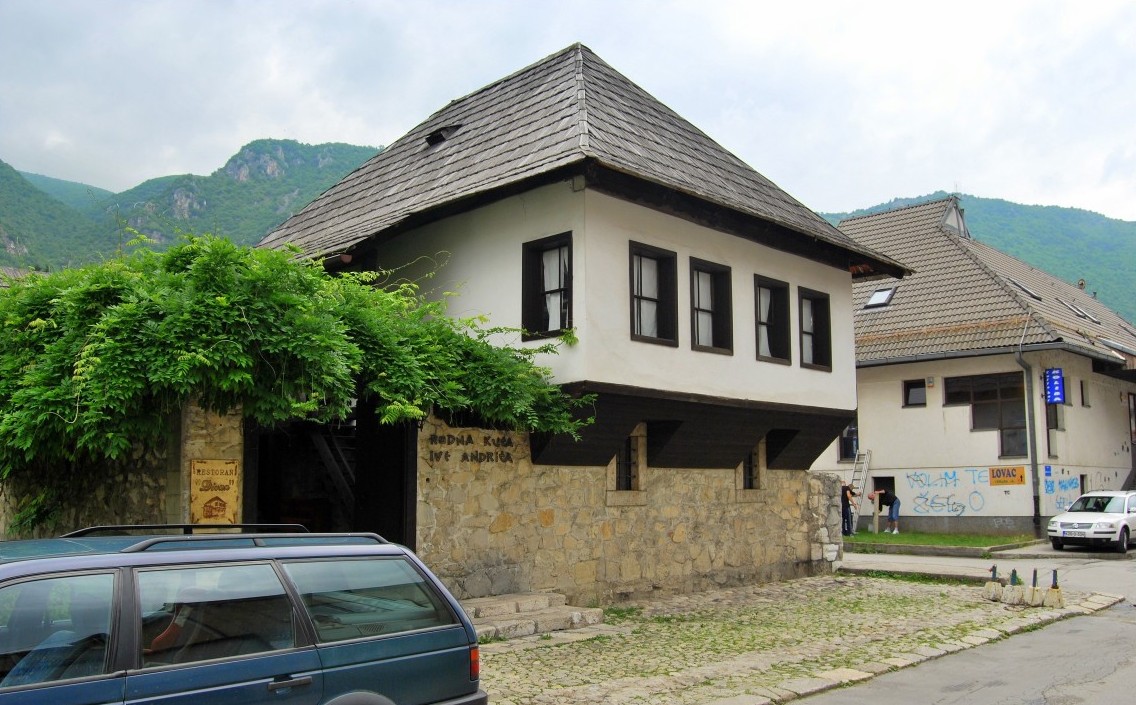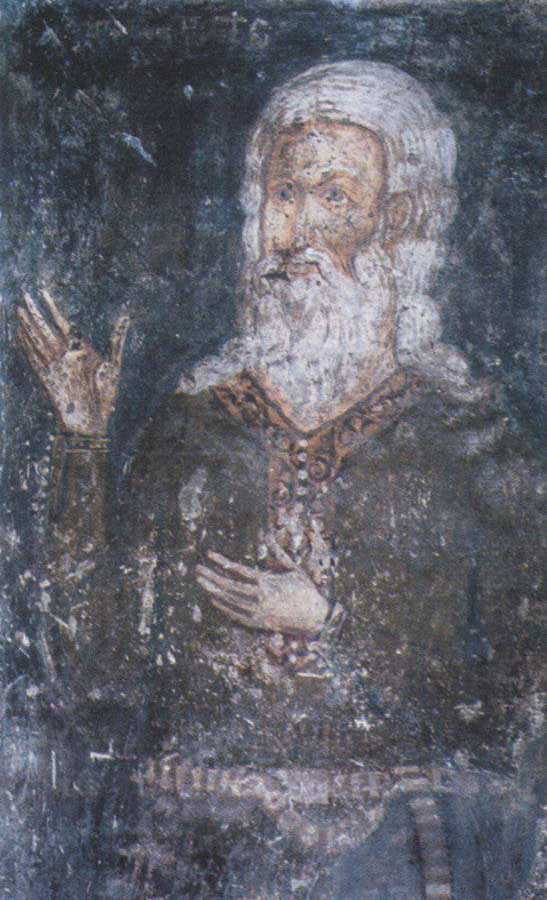|
Višegrad
Višegrad ( sr-cyrl, Вишеград, ) is a town and municipality located in eastern Republika Srpska, an entity of Bosnia and Herzegovina. It rests at the confluence of the Drina and the Rzav river. As of 2013, it has a population of 10,668 inhabitants, while the town of Višegrad has a population of 5,869 inhabitants. The town includes the Ottoman-era Mehmed Paša Sokolović Bridge, a UNESCO world heritage site which was popularized by Ivo Andrić in his novel ''The Bridge on the Drina''. A tourist site called ''Andrićgrad (Andrić Town)'', dedicated to Andrić, is located near the bridge. Etymology Višegrad is a South Slavic toponym meaning "the upper town/castle/fort". Geography Višegrad is located at the confluence of the Drina river and the Rzav river in eastern Bosnia and Herzegovina, on the road from Goražde and Ustiprača towards Užice, Serbia, which is part of the geographical region of Podrinje. It is also part of the historical region of Stari Vlah; t ... [...More Info...] [...Related Items...] OR: [Wikipedia] [Google] [Baidu] |
Drina
The Drina ( sr-Cyrl, Дрина, ) is a long Balkans river, which forms a large portion of the border between Bosnia and Herzegovina and Serbia. It is the longest tributary of the Sava River and the longest karst river in the Dinaric Alps which belongs to the Danube river watershed. Its name is derived from the Roman name of the river ( la, Drinus) which in turn is derived from Greek (Ancient Greek: ). The Drina originates from the confluence of the rivers Tara and Piva, in the glen between the slopes of the Maglić, Hum and Pivska Planina mountains, in the area of Šćepan Polje (in Montenegro) and Hum (Bosnia and Herzegovina) villages. Hydrological characteristics The Drina is a very fast and cold alpine river, with a very high 175:346 meandering ratio, and relatively clean water, which has particularly intensive green coloration, a usual characteristic of most alpine rivers running through a karstic and flysch terrain made of limestone, underlying the area in which th ... [...More Info...] [...Related Items...] OR: [Wikipedia] [Google] [Baidu] |
The Bridge On The Drina
''The Bridge on the Drina'' () is a historical novel by the Yugoslav writer Ivo Andrić. It revolves around the Mehmed Paša Sokolović Bridge in Višegrad, which spans the Drina River and stands as a silent witness to history from its construction by the Ottomans in the mid-16th century until its partial destruction during World War I. The story spans about four centuries and covers the Ottoman and Austro-Hungarian occupations of the region, with a particular emphasis on the lives, destinies and relations of the local inhabitants, especially Serbs and Bosnian Muslims. Andrić had been Yugoslavia's ambassador to Germany from 1939 to 1941, during the early years of World War II, and was arrested by the Germans in April 1941, following the German-led Axis invasion of Yugoslavia. In June 1941, he was allowed to return to German-occupied Belgrade but was confined to a friend's apartment in conditions that some biographers liken to house arrest. The novel was one of three that Andri ... [...More Info...] [...Related Items...] OR: [Wikipedia] [Google] [Baidu] |
Ivo Andrić
Ivo Andrić ( sr-Cyrl, Иво Андрић, ; born Ivan Andrić; 9 October 1892 – 13 March 1975) was a Yugoslav novelist, poet and short story writer who won the Nobel Prize in Literature in 1961. His writings dealt mainly with life in his native Bosnia under Ottoman rule. Born in Travnik in Austria-Hungary, modern-day Bosnia and Herzegovina, Andrić attended high school in Sarajevo, where he became an active member of several South Slav national youth organizations. Following the assassination of Archduke Franz Ferdinand in June 1914, Andrić was arrested and imprisoned by the Austro-Hungarian police, who suspected his involvement in the plot. As the authorities were unable to build a strong case against him, he spent much of the war under house arrest, only being released following a general amnesty for such cases in July 1917. After the war, he studied South Slavic history and literature at universities in Zagreb and Graz, eventually attaining his PhD. in Graz in 1924 ... [...More Info...] [...Related Items...] OR: [Wikipedia] [Google] [Baidu] |
Mehmed Paša Sokolović Bridge
The Mehmed Paša Sokolović Bridge ( sr, Мост Мехмед-паше Соколовића, Most Mehmed-paše Sokolovića) is a historic bridge in Višegrad, over the Drina River in eastern Bosnia and Herzegovina. It was completed in 1577 by the Ottoman court architect Mimar Sinan on the order of the Grand Vizier Mehmed Paša Sokolović. UNESCO included the bridge in its 2007 World Heritage List. Characteristics It is characteristic of the apogee of Turkish monumental architecture and civil engineering. It numbers 11 masonry arches, with spans of 11 to 15 meters, and an access ramp at right angles with four arches on the left bank of the river. The bridge is a representative masterpiece of Mimar Sinan, one of the greatest architects and engineers of the classical Ottoman period and a contemporary of the Italian Renaissance, with which his work can be compared. The UNESCO summary states: ''The unique elegance of proportion and monumental nobility of the property as a whol ... [...More Info...] [...Related Items...] OR: [Wikipedia] [Google] [Baidu] |
Republika Srpska
Republika Srpska ( sr-Cyrl, Република Српска, lit=Serb Republic, also known as Republic of Srpska, ) is one of the two Political divisions of Bosnia and Herzegovina, entities of Bosnia and Herzegovina, the other being the Federation of Bosnia and Herzegovina. It is located in the north and east of the country. Its largest city and administrative centre is Banja Luka, lying on the Vrbas (river), Vrbas river. Republika Srpska was formed in 1992 at the outset of the Bosnian War with the stated intent to safeguard the interests of the Serbs of Bosnia and Herzegovina. The war saw the Ethnic cleansing in the Bosnian War, expulsion of the vast majority of Croats of Bosnia and Herzegovina, Croats and Bosniaks from the territory claimed by Republika Srpska and an inflow of Serbs expelled from Federation of Bosnia and Herzegovina. Following the Dayton Agreement of 1995, Republika Srpska achieved international recognition as an entity within Bosnia and Herzegovina. ... [...More Info...] [...Related Items...] OR: [Wikipedia] [Google] [Baidu] |
Pribil
}, fl. 1370s) was a Serbian ''župan'' (count) who built the Dobrun Monastery in Dobrun, Višegrad, as a family funeral church. He founded the church together with his sons, župan Petar and župan Stefan. There are frescoes of the family, and of a higher-ranked nobleman, ''protovestijar'' Stan, who was Pribil's father-in-law. The founding date of the monastery is uncertain. Dates have been given as: reign of King Stefan Dušan (before 1343); 1360–70; and 1370s. Family With his wife Boleslava, he had two sons: *''župan'' Petar ( 1383), took monastic vows as ''Jovan'' *''župan'' Stefan See also *Dobrun Monastery *Serbian nobility Serbian nobility ( sr, српска властела / srpska vlastela, српско властелинство / srpsko vlastelinstvo or српско племство / srpsko plemstvo) refers to the historical privileged order or class (aristocrac ... References {{reflist 14th-century Serbian nobility People from Višegrad People of the Kingdom ... [...More Info...] [...Related Items...] OR: [Wikipedia] [Google] [Baidu] |
Andrićgrad
Andrićgrad (, lit. " Andrić's town") is the name of a construction project located in Višegrad, Republika Srpska, Bosnia and Herzegovina by film director Emir Kusturica. The town is dedicated to the Yugoslav novelist and Nobel Prize winner Ivo Andrić. Construction of Andrićgrad, also known as Kamengrad (Каменград, "Stonetown") started on 28 June 2011, and was officially opened on 28 June 2014, on Vidovdan. Andrićgrad is located several kilometers from Kusturica's first town, Drvengrad, in Serbia. Andrićgrad was, in 2022, the venue used for the twelfth edition of ''Bina Mira'', a youth festival that focuses on peace and equality between nations, that drew over 80 students from Belgium, Bosnia and Herzegovina, Croatia, Germany, Romania, Serbia and Slovenia. Overview Andrićgrad is located near the Mehmed Paša Sokolović Bridge, a UNESCO World Heritage Site, and stretches from the bridge up to the confluence of the Rzav River. After Drvengrad (), this is the s ... [...More Info...] [...Related Items...] OR: [Wikipedia] [Google] [Baidu] |
Stefan Dušan
Stefan Uroš IV Dušan ( sr-Cyrl, Стефан Урош IV Душан, ), known as Dušan the Mighty ( sr, / ; circa 1308 – 20 December 1355), was the King of Serbia from 8 September 1331 and Tsar (or Emperor) and autocrat of the Serbs, Greeks (or Romans), Albanians and Bulgarians from 16 April 1346 until his death in 1355. Dušan conquered a large part of southeast Europe, becoming one of the most powerful monarchs of the era. Under Dušan's rule, Serbia was the major power in the Balkans, and an Eastern Orthodox multi-ethnic and multi-lingual empire that stretched from the Danube in the north to the Gulf of Corinth in the south, with its capital in Skopje. He enacted the constitution of the Serbian Empire, known as Dušan's Code, perhaps the most important literary work of medieval Serbia. Dušan promoted the Serbian Church from an archbishopric to a patriarchate, finished the construction of the Visoki Dečani Monastery (now a UNESCO site), and founded the monastery of ... [...More Info...] [...Related Items...] OR: [Wikipedia] [Google] [Baidu] |
Podrinje
Podrinje (Serbian Cyrillic: Подриње) is the Slavic name of the Drina river basin, known in English as the Drina Valley. The Drina basin is shared between Bosnia and Herzegovina and Serbia, with majority of its territory being located in Eastern Bosnia, entire Upper Drina course and majority of the Middle course, while the Lower Drina course is shared between two countries,with the river representing border. The part of the Drina basin located in Bosnia and Herzegovina is also called Eastern Bosnia. History Between 1918 and 1922, Podrinje District, with its seat in Šabac, was one of the districts of the Kingdom of Serbs, Croats and Slovenes. The district comprised the north-western part of present-day Šumadija and Western Serbia. Between 1922 and 1929, Podrinje Oblast existed in roughly the same area also with its seat in Šabac. In 1929, a large province of the Kingdom of Yugoslavia known as the Drina Banovina was formed with its capital in Sarajevo. Drina Banovina i ... [...More Info...] [...Related Items...] OR: [Wikipedia] [Google] [Baidu] |
Rzav (Drina)
The Rzav ( bs, Rzav, sr-cyr, Рзав) is a river in western Serbia and eastern Bosnia and Herzegovina. The 72 km long right tributary to the Drina river, it originates from two headstreams, the Crni Rzav and the Beli Rzav. The river is sometimes referred to as the Zlatiborski Rzav (Serbian Cyrillic: Златиборски Рзав; "Rzav of Zlatibor"). Beli Rzav The Beli Rzav ( bs, Bijeli Rzav, sr-cyr, Бели Рзав; "White Rzav") is the Rzav's shorter headstream. It originates from the eastern slopes of the Zvijezda mountain, close to the Bosnian border. After it passes the hills of Batura, it turns southward to the Tara mountain, receiving many small streams from both Tara and Zvijezda mountains. At the monastery and village of Zaovine, the Beli Rzav is dammed and the artificial Zaovine Lake is created. After crossing the village of Mokra Gora (hamlets Kršanje and Kotroman), the river turns west, enters Bosnia and Herzegovina and right across the border meets th ... [...More Info...] [...Related Items...] OR: [Wikipedia] [Google] [Baidu] |
Dobrun Monastery
The Dobrun Monastery ( sr, Манастир Добрун, Manastir Dobrun) is located in Bosnia and Herzegovina, 12 km away from town of Višegrad, in the gorge of the Rzav river near the border with Republic of Serbia. Dobrun Monastery is dedicated to the Dormition of the Virgin and was built in 1343 by Duke Pribil }, fl. 1370s) was a Serbian ''župan'' (count) who built the Dobrun Monastery in Dobrun, Višegrad, as a family funeral church. He founded the church together with his sons, župan Petar and župan Stefan. There are frescoes of the family, and of a ... and his sons Stefan and Petar. References Serbian Orthodox monasteries in Bosnia and Herzegovina Buildings and structures in Republika Srpska {{bosniaHerzegovina-struct-stub ... [...More Info...] [...Related Items...] OR: [Wikipedia] [Google] [Baidu] |
Užice
Užice ( sr-cyr, Ужице, ) is a city and the administrative centre of the Zlatibor District in western Serbia. It is located on the banks of the river Đetinja. According to the 2011 census, the city proper has a population of 59,747. The City municipality of Užice ( sr-cyrl, Градска општина Ужице, Gradska opština Užice) is one of two city municipalities (with the City municipality of Sevojno) which constitute the City of Užice. According to the 2011 census results, the municipality has 70,939 inhabitants. History Ancient era The region surrounding Užice was settled by Illyrians, specifically the Parthini and the Celtic-influenced Autariatae tribes. Their tombs are found throughout the region. In the 3rd century BC, the Scordisci featured prominently after the Gallic invasion of the Balkans. The region was conquered by the Roman Empire in 168 BC, and was organized into the province of Illyricum in 32–27 BC and, after 10 AD, the province of Dalmat ... [...More Info...] [...Related Items...] OR: [Wikipedia] [Google] [Baidu] |






